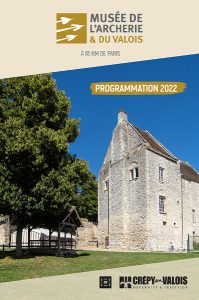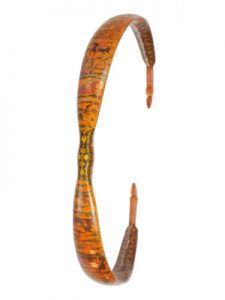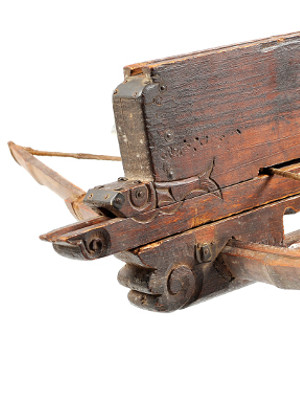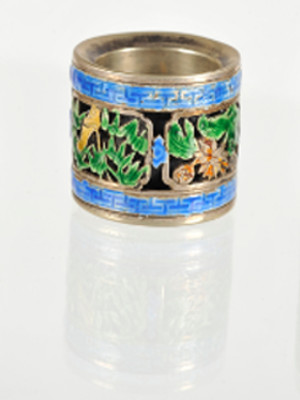Persian bow
Ostad Madjid
Iran
1809-1810
Lacquered wood and decorated with hunting scenes, horn and sinew
Deposit of Pierrette Scart, 1965
Inv.D1965.2
______________
Persian bows were used for hunting as well as for war. Different types of bows were made either from metal, ivory or composite materials known to be the most powerful. Strings were then a combination of animal skins (horse, deer, rhinoceros, wild bull), tendons and silk.
This bow has inscriptions that indicate that it was made by the craftsman Ostad Madjid, in Teheran, in the year 1188 of persian calendar, or in the year 1809-1810 of our era. Very similar artworks are present in the Museum of the Noyonnais in Noyon, as well as in the Museum of the Horse in Chantilly.
The decorations on the branches are very fine. They depict different hunting scenes. Landscapes are shown as vegetation or architectural elements, inspired by ornamental motifs present in manuscripts from the same period. The orange background highlights the characters and animals, which are painted with incredible subtlety. The handle on a black background, decorated with golden floral motifs, is characteristic of the Kadjar Turkmen dynasty that reigned from 1786 to 1925.
The extremities of the branches use the handle’s motifs again before ending in wood colored parts, varnished and also decorated with fine golden motifs.















